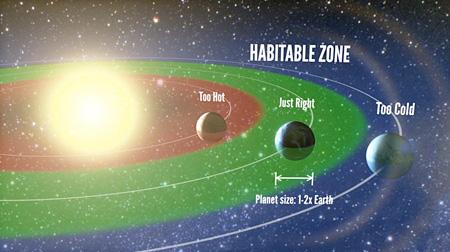Earth-like planets are more common than was previously believed, astronomers say in a new analysis.
The astronomers say that about 20 percent of stars are like the sun, and these stars have accompanying planets that are like Earth.
That equals a potential of several tens of billions of Earth-like planets in the Milky Way galaxy alone.
“When you look up at the thousands of stars in the night sky, the nearest sun-like star with an Earth-size planet in its habitable zone is probably only 12 light years away and can be seen with the naked eye,“ said UC Berkeley graduate student Erik Petigura, who led the analysis of data from NASA’s Kepler space telescope, in the announcement. ”That is amazing.”
“It’s been nearly 20 years since the discovery of the first extrasolar planet around a normal star. Since then, we have learned that most stars have planets of some size orbiting them, and that Earth-size planets are relatively common in close-in orbits that are too hot for life,” said Andrew Howard, a former UC Berkeley post-doctoral fellow who is now on the faculty of the Institute for Astronomy at the University of Hawaii. “With this result, we’ve come home, in a sense, by showing that planets like our Earth are relatively common throughout the Milky Way Galaxy.”
The findings are published in the journal Proceedings of the National Academy of Sciences.
However, the astronomers caution that just because a planet is Earth-like doesn’t mean it is habitable.
“Some may have thick atmospheres, making it so hot at the surface that DNA-like molecules would not survive. Others may have rocky surfaces that could harbor liquid water suitable for living organisms,” said Geoffrey Marcy, a UC Berkeley professor of astronomy. “We don’t know what range of planet types and their environments are suitable for life.”
Multiple planets have previously been announced that were found by Kepler to be like Earth and possibly have suitable conditions for life, though, giving astronomers hope for more firm analysis that proves they are suitable.
The astronomers focused on 42,000 stars initially that are like the sun or slightly cooler and smaller and found 603 planets that are like Earth orbiting them. 10 of these planets were a similar size to Earth, and deemed habitable.
The team’s definition of habitable is that a planet receives between four times and one-quarter the amount of light that Earth receives from the sun.





